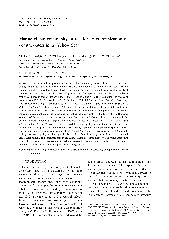摘要
We assessed the potential of marine ciliate community as an indicator to coastal water quality using water samples collected from four stations in the Yellow Sea in the summer 2000. The four stations were characterized by different levels of pollution. The ciliate communities consisted primarily of tintinnids and aloricate ciliates that were < 30 mu m. A total of 78 species were classified: 55 species at Station 2, 51 species each at Stations 1 and 4, and 47 species at Station 3. The mean number of species at each site was 29.2 +/- 2.0 (Station 1), 28.5 +/- 2.9 (Station 2), 27.8 +/- 1.7 (Station 3), and 24.5 +/- 2.3 (Station 4). The abundance was highly variable: 19 331 +/- 11 187 ind./L at Station 1, 7 960 +/- 5 639 ind./L at Station 2, 29 015 +/- 12 999 ind./L at Station 3, and 8 190 +/- 4 658 ind./L at Station 4. Our results suggest that neither the simple chemical analysis (e.g. chemical oxygen demand, dissolved inorganic nitrogen, and phosphate) nor the eutrophication/pollution index adequately described the water quality at the four stations. The same was true of the number of species and their abundance, both of which had no correlation with the chemical indices. In contrast, Margalef's diversity index values (3.12 at Station 2, 2.89 at Station 1, and 2.64 at Stations 3 and 4) generally discriminated the water quality status of the four stations. The difference in water quality among the stations was strongly supported by the pattern of species richness (i.e. the total number of species) of ciliates at each station. Our evaluation was consistent with the results of long-term water quality monitoring at the four stations. With increasing eutrophication, we observed also a compositional and functional shift in the ciliate assemblages from algivorous oligotrich/choreotrich to nonselective-omnivorous gymnostomatids to bacterivorous-detrivorous scuticociliatids. Thus, ciliates may be used to indicate the coastal water quality status of a given site.
- 出版日期2011-1
- 单位中国极地研究中心; 中国科学院海洋研究所
